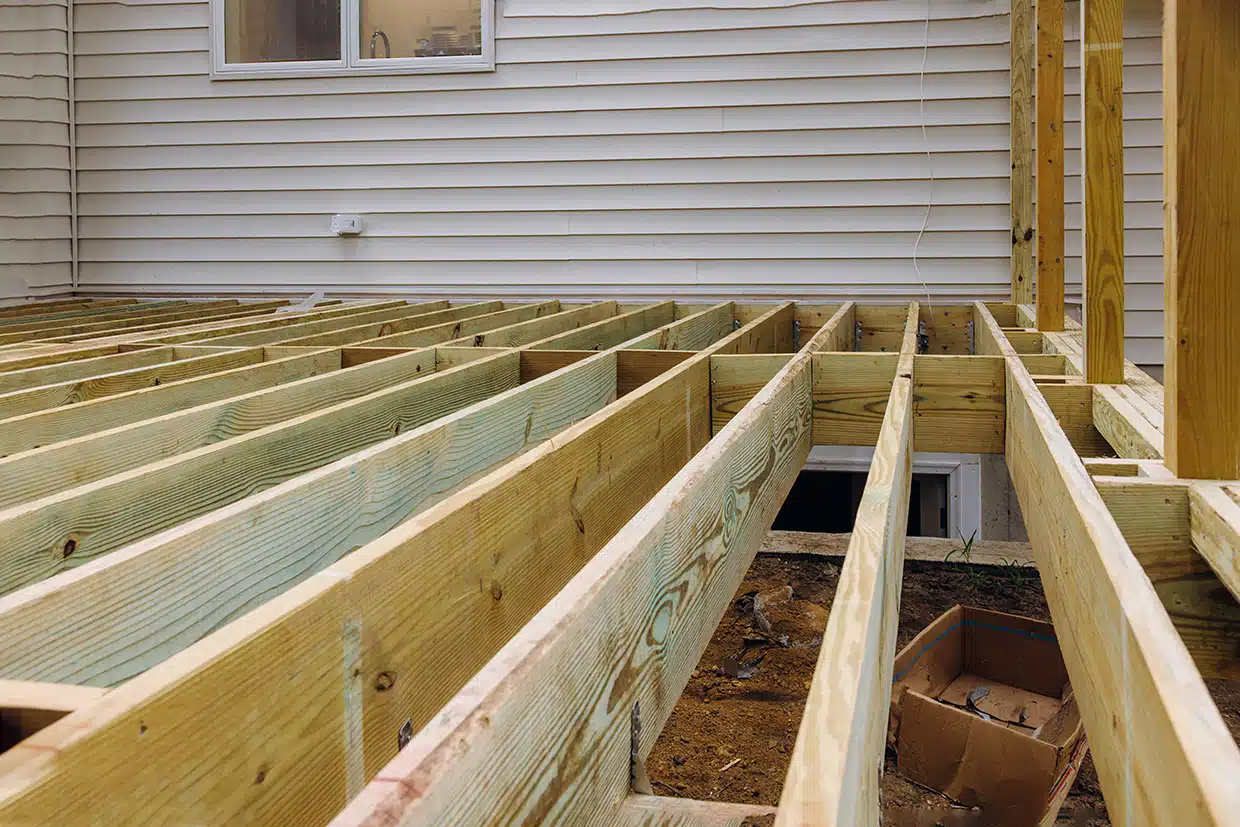A deck is more than a structure; it's an outdoor sanctuary for relaxation, entertainment, and connection. Selecting the right decking material is pivotal for durability, aesthetics, and long-term satisfaction. Let's explore various decking materials available:
1. Pressure-Treated Wood: Traditional and Budget-Friendly
- Overview: Widely used and cost-effective.
- Pros: Resistance to rot, insects, and easy accessibility.
- Cons: Requires regular maintenance (sealing, staining, or painting) and may warp over time.
2. Composite Decking: Durability with Low Upkeep
- Composite Materials: Blend of wood fibers and plastics.
- Advantages: High durability, low maintenance, resistance to fading, insects, and rot.
- Considerations: Higher initial cost and potential for visible scratches.
3. Hardwood Elegance: Ipe, Mahogany, and Exotic Woods
- Exotic Hardwoods: Known for extreme durability and natural beauty.
- Benefits: Highly resistant to decay, insects, and weather.
- Drawbacks: Higher upfront cost and periodic maintenance for color and integrity.
4. Cedar and Redwood: Natural Charm and Longevity
- Natural Wood Choices: Valued for aesthetics and innate resistance.
- Pros: Appealing appearance, natural resistance to decay.
- Cons: Higher initial investment and regular maintenance needs.
5. PVC/Plastic Decking: Durability without Hassle
- Synthetic Materials: Offering durability and moisture resistance.
- Advantages: Low maintenance, moisture resistance, and resistance to insects.
- Considerations: May lack the organic look of wood and could be more expensive.
6. Aluminum Decking: Unmatched Durability and Low Maintenance
- Aluminum Decks: Known for extreme durability and minimal upkeep.
- Pros: Resistant to fire, rot, and insects.
- Cons: Limited aesthetic options and potential heat retention.
Key Considerations When Choosing
- Durability and Longevity: Assess materials' resilience under different climates.
- Aesthetics and Customization: Explore appearances, textures, colors, and design options.
- Maintenance Requirements: Consider time and costs associated with upkeep.
Environmental Impact and Financial Considerations
- Sustainability: Evaluate eco-friendly options and materials with sustainable sourcing or recycling capabilities.
- Cost Analysis: Balance upfront costs against long-term expenses, including maintenance.


